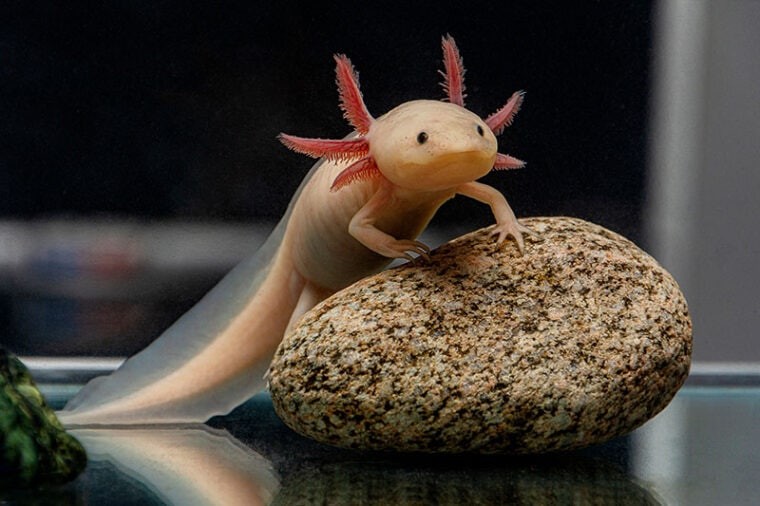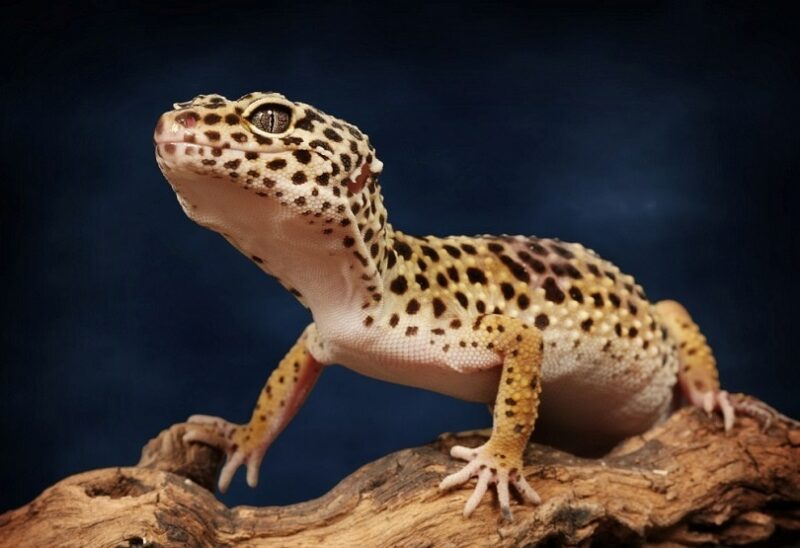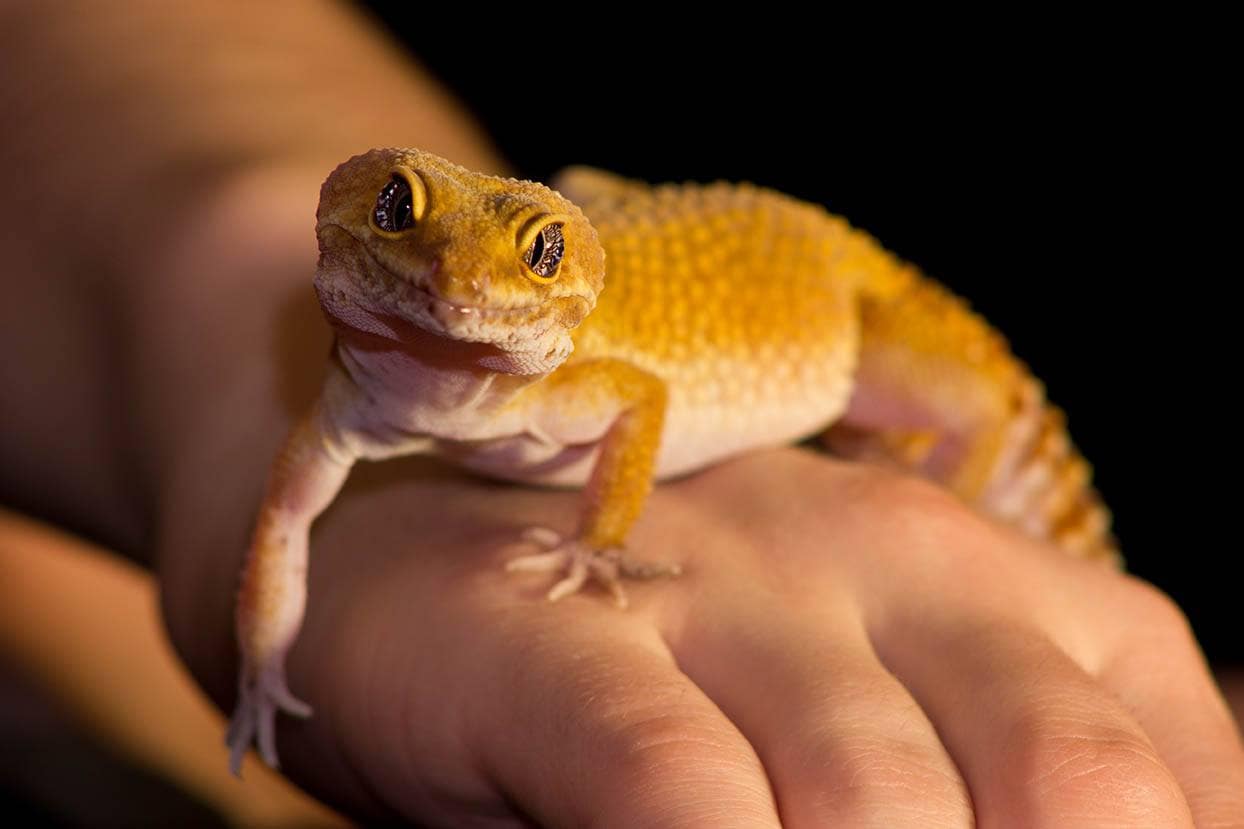
Axolotls are extraordinary creatures that are unique in the animal kingdom. The endangered aquatic pets are found in the wild in only one place on the Earth. Axolotls are a Salamander species native only to Xochimilco Lake and its branching waterways in Mexico.
The gilled amphibians are perfectly adapted to their unique environment; Axolotls are neotenic, meaning they retain their neonatal larval features.1 This makes them ideal for survival in the lakes since the area is at a higher altitude and has tepid water (around 68°F) all year round.
Axolotls have large branching gills, their most prominent features, sitting on the sides of their heads. These organs allow the Axolotl to breathe in the water, although they also have lungs which are only used if the Axolotl experiences metamorphosis.2 A long dorsal fin keeps them stable as they walk through the water. Axolotls are very large; they’re the largest salamander species, even out of those that walk on land.
How Did Axolotls Become Pets?
Aztec mythology revered the Axolotl, and the Aztecs named it after Xolotl. Aztecs referred to Xolotl as the god of fire and lightning, who guided souls to the underworld. The Axolotl was named after him because of his shape-shifting abilities, giving the Axolotl historical importance in the area.
The mysterious animals drew interest from western cultures in 1864, when travelers brought wild specimens back to Paris from Mexico, including the white-pink-skinned Axolotl. Breeding soon began, and an Axolotl pet trade quickly flourished across Europe. Pet Axolotls almost always have pale pink-white, almost translucent skin and bright pink gills. However, in their natural habitat, Axolotls are mostly a mottled gray-brown.

Can You Own Axolotls as Pets in America?
For various reasons, some states don’t allow an Axolotl to be kept in captivity. The primary worry is that they may escape or be let out of captivity and mate with salamanders native to the area (such as the Tiger Salamander). The bans are also partly due to poaching concerns and the dwindling number of Axolotls living in their natural habitat. California, Maine, New Jersey, and the District of Colombia don’t allow Axolotls as pets, and permits are required to keep them in New Mexico and Hawaii.
Why Are Pet Axolotls Different From Those Found in the Wild?
Wild Axolotls are critically endangered; there are only between 50 and 1000 individual Axolotls left in their natural habitat. They must hunt for their food to survive, avoid predators, and successfully mate to continue the species, and the wild Axolotl is highly specialized to its environment.
For example, wild Axolotls are a mottled brown-green and gray color to blend in with their surroundings, and the pale white-pink “leucistic” Axolotls we see in homes and laboratories are very rare to find in the wild.
A study has shown that due to the vast numbers of Axolotls thriving and being bred in captivity, the animals have changed and are now different from their wild counterparts.1 This is possibly due in part to inbreeding between lab specimens or the introduction of Tiger Salamanders into captive populations in 1962, causing hybrids to be born. Unfortunately, captive Axolotls are also not as resistant to disease as those found in the wild, so reintroducing captive Axolotls into their natural habitat is difficult.
Why Are Axolotls Going Extinct in the Wild?
Axolotls are almost extinct. They sit at the critically endangered level on the IUCN’s (International Union for Conservation of Nature and Natural Resources) red list, which is a conservation index. A study performed by the biologist Luis Zambrano identified 6,000 axolotls per square kilometer in Xochimilco Lake in 1988; today, this number has plummeted to just 35.3

What Are the Reasons for the Declining Numbers of Wild Axolotls?
The reasons for the sharp decline in wild Axolotl numbers include the following:
Habitat Loss
Only one of the two lakes Axolotls were initially found in still exists. Lake Chalco was drained and filled in due to flooding concerns, meaning Xochimilco Lake is the only one remaining. However, it is also being partially drained to allow for the further development of Mexico City.
Water Pollution
Along with the draining of part of the lake complex, the remaining waters of Xochimilco Lake are becoming polluted. The pollution from Mexico City, including the pumping of treated water containing heavy metals into the lake, has caused some parts of the area to become inhospitable to most aquatic life, not just Axolotls.
Overfishing
Unfortunately, Axolotls are now becoming a delicacy in Mexico City.

Invasive Species
The introduction of harmful non-native species into the waterways has disrupted the food chain, which Axolotls used to be the top of, and has forced them to compete for their food. Fish like Tilapia and Perch not only eat the Axolotl’s food, but they also eat their young.
What Is Being Done to Help Protect Axolotls in Their Original Habitat?
Because of the Axolotl’s huge scientific value, the scientific community is taking steps to conserve natural populations. For example, the canals in Mexico City have been designated to provide shelter for wild Axolotls. Biologists are also working on reintroducing captive-bred Axolotls back into the lake to increase wild numbers. A recent study documenting these two exercises showed that the steps are promising, but there’s lots of work to be done to fix the problem at its source.
Why Do Axolotls Have Scientific Value?
Axolotls are one of the most studied freshwater creatures in the world because they can teach us about tissue and limb regeneration and metamorphosis. For example, axolotls can regenerate lost limbs and organs (including the heart, eyes, and part of their brain) and successfully incorporate transplanted limbs onto their bodies.
Axolotl can help us improve transplant success in humans and other interesting research. Because of this, the scientific community is working hard to protect the last few remaining Axolotls in their own habitat.

Final Thoughts
Axolotls are incredible creatures that hold value for the scientific community and the world at large. Their unique biology makes them fascinating to study and relatively hardy. However, the natural population of Axolotl is almost extinct, so we must put protections in place to help them recuperate and replenish their numbers, lest we lose this species in the wild habitat forever.
Featured Image Credit: Iva Dimova, Shutterstock








